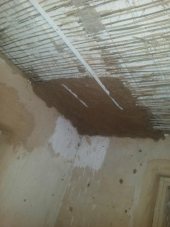
 3
3




 7
7




Country oriented nerd with primary interests in alternate energy in particular solar. Dabble in gardening, trees, cob, soil building and a host of others.
 3
3




Invasive plants are Earth's way of insisting we notice her medicines. Stephen Herrod Buhner
Everyone learns what works by learning what doesn't work. Stephen Herrod Buhner
 9
9




Gardens in my mind never need water
Castles in the air never have a wet basement
Well made buildings are fractal -- equally intelligent design at every level of detail.
Bright sparks remind others that they too can dance
What I am looking for is looking for me too!


 8
8




- Tim's Homestead Journal - Purchase a copy of Building a Better World in Your Backyard - Purchase 6 Decks of Permaculture Cards -
- Purchase 12x Decks of Permaculture Cards - Purchase a copy of the SKIP Book - Purchase 12x copies of Building a Better World in your Backyard
 6
6











 3
3




Pearl Sutton wrote:Personally, I'd put several good thick coats of elastomeric paint over it. That makes things waterproof, I expect it would constrain the lead paint.







 7
7




r ranson wrote:
Pearl Sutton wrote:Personally, I'd put several good thick coats of elastomeric paint over it. That makes things waterproof, I expect it would constrain the lead paint.
I learned about a new kind of paint today. Thanks. That stuff sounds very useful for this situation.
Gardens in my mind never need water
Castles in the air never have a wet basement
Well made buildings are fractal -- equally intelligent design at every level of detail.
Bright sparks remind others that they too can dance
What I am looking for is looking for me too!

 9
9




"You must be the change you want to see in the world." "First they ignore you, then they laugh at you, then they fight you, then you win." --Mahatma Gandhi
"Preach the Gospel always, and if necessary, use words." --Francis of Assisi.
"Family farms work when the whole family works the farm." -- Adam Klaus
 1
1




John Daley Bendigo, Australia The Enemy of progress is the hope of a perfect plan
Benefits of rainfall collection https://permies.com/t/88043/benefits-rainfall-collection
GOOD DEBT/ BAD DEBT https://permies.com/t/179218/mortgages-good-debt-bad-debt
 2
2




Pearl Sutton wrote:Personally, I'd put several good thick coats of elastomeric paint over it. That makes things waterproof, I expect it would constrain the lead paint.
I hate sheet-rocking over my head. It's heavy! I'd use wood paneling on 2x4 studs rather than sheet rock. But if I were doing that, I'd still give it elastomeric paint before I did. Lead dust is not a thing to skimp on, and it will continue flaking if not glued in by something evil (like that paint) and the flakes will wander out cracks.
So my vote would be a glue it down hard layer of some sort, followed if desired by a ceiling smoothing layer of some sort. But I would NOT skip the glue down layer, and regular cheap paint won't be mean enough.
 2
2




Pearl Sutton wrote:Personally, I'd put several good thick coats of elastomeric paint over it. That makes things waterproof, I expect it would constrain the lead paint.
I hate sheet-rocking over my head. It's heavy! I'd use wood paneling on 2x4 studs rather than sheet rock. But if I were doing that, I'd still give it elastomeric paint before I did. Lead dust is not a thing to skimp on, and it will continue flaking if not glued in by something evil (like that paint) and the flakes will wander out cracks.
So my vote would be a glue it down hard layer of some sort, followed if desired by a ceiling smoothing layer of some sort. But I would NOT skip the glue down layer, and regular cheap paint won't be mean enough.
Chat GPT wrote:
Using elastomeric paint above a wood cookstove is not a safe option, particularly when there's a food drying rack between the stove and the ceiling. Here's why:
🔥 Why It's a Risk
1. Elastomeric Paint Isn't Heat-Resistant
Elastomeric coatings are designed for exterior walls and roofs for flexibility and waterproofing—not high heat.
Most are rated only up to 150–200°F (65–93°C). A wood stove can radiate heat to ceilings well above this, especially directly above it.
Off-gassing risk: When overheated, elastomeric paint may release toxic fumes, especially problematic near food.
2. Proximity to Food
A drying rack between the stove and ceiling means food is directly in line with:
Heat
Rising fumes
Potential off-gassing from paint
Even if the paint doesn’t visibly burn, volatile organic compounds (VOCs) could contaminate drying food.
✅ Better Alternatives
For Ceilings Above a Stove:
Use heat-resistant paint specifically rated for high temperatures (e.g., Rust-Oleum High Heat, or stove/fireplace paint).
Use a metal heat shield or cement board above the stove instead of paint if protection is needed.
Maintain clearances per stove manufacturer specs—often 36" or more to combustibles.
For Food Drying Areas:
Ensure food drying is done in an area with:
Clean, food-safe surfaces
Good air circulation
Protection from smoke/fumes
Avoid drying food in areas exposed to any kind of non-food-safe coatings or adhesives.
Summary
Do not use elastomeric paint above a wood cookstove, especially where food is drying. It poses a heat and toxicity hazard. Use heat-rated paint or a non-combustible barrier instead.
Let me know your ceiling material or layout if you'd like specific safer options.
 2
2




r ranson wrote:The biggest risk of lead is breathing dust (like from sanding). Please take precautions. Asbestos is also a worry as that was used in houses long after lead paint was banned. Asbestos causes more harm, over shorter time, with less exposure. This is also most risky when breathed.
Next risk come ingestion, and the least (but still not safe) is from absorption through the skin. But these are infinitesimal compared to the risk from sanding and breathing dust.
The simplest way is to leave the old paint and create a barrier. Most old houses I've seen deal with this by building a false ceiling below the old one using modern materials.
Added advantage is this adds an air gap that helps with insulation.
Another barrier is to put new paint on top, but if it's pealing, that needs dealing with first (we are back to risky sanding) and it's probably oil paint which usually needs specific paint to stick to it long term.
 6
6




"When the whole world is running towards a cliff, he who is running in the opposite direction appears to have lost his mind." C.S. Lewis
Visit https://themaineingredient.com for organic, premium dried culinary herbs that are grown, processed, and packaged in the USA.
 2
2




"We're all just walking each other home." -Ram Dass
"Be a lamp, or a lifeboat, or a ladder."-Rumi
"It's all one song!" -Neil Young
 6
6




Joshua Plymouth wrote:
according to chat GPT putting elastomeric paint above a woodstove with a drying rack between the paint and the stove is a bad idea, as it may leech toxic fumes into the drying food... SO SCRAP THAT IDEA... A cheap solution i just thought of is using aluminum foil like you get at walmart and somehow sealing it to the drywall ceiling.
Chat GPT wrote:
Using elastomeric paint above a wood cookstove is not a safe option, particularly when there's a food drying rack between the stove and the ceiling. Here's why:
🔥 Why It's a Risk
1. Elastomeric Paint Isn't Heat-Resistant
Elastomeric coatings are designed for exterior walls and roofs for flexibility and waterproofing—not high heat.
Most are rated only up to 150–200°F (65–93°C). A wood stove can radiate heat to ceilings well above this, especially directly above it.
Off-gassing risk: When overheated, elastomeric paint may release toxic fumes, especially problematic near food.
Gardens in my mind never need water
Castles in the air never have a wet basement
Well made buildings are fractal -- equally intelligent design at every level of detail.
Bright sparks remind others that they too can dance
What I am looking for is looking for me too!

 8
8












|
A new kitten. What are we gonna name it? How about tiny ad?
The new gardening playing cards kickstarter is now live!
https://www.kickstarter.com/projects/paulwheaton/garden-cards
|





